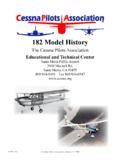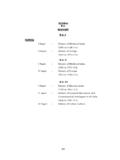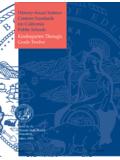Transcription of HISTORY OF THE OLD “FITPATHS”
1 EARLY DUNFERMLINE. 1. EARLY DUNFRMLINE. 2. DUNFERMLINE STREETS ARE INDEXED - ALPHABETICALLY. TWO EARLY MAPS - ARE SHOWN BEFORE THIS PAGE. Page CROSSFORD 415. HALBEATH 443. KINGSEAT 449. ROSYTH 452. TOWNHILL 487. WELLWOOD 496. <> <> <> <> <> <> <> <> <> <>. FOR SALE DISCS CAN BE PURCHSED FOR 5 - PLUS POSTAGE - FROM - Pitcairn Publications - The Genealogy Clinic - 18 Chalmers Street, Dunfermline FIFE SCOTLAND - KY12 8DF. Tel: 01383 739344 Email: 3. HISTORY OF THE OLD fitpaths . AND STREETS OF DUNFERMLINE, THEN, AND NOW. ALSO. CROSSFORD, HALBEATH, ROSYTH, TOWNHILL & WELLWOOD. Dunfermline s Old Seal with Coat of Arms. <> <> <> <> <> <>. Millennium Twentieth Century Dunfermline.
2 PITCAIRN PUBLICATIONS. Pitcairn Publications, The Genealogy Clinic, 18 Chalmers Street, Dunfermline KY12 8DF. Tel: 01383 739344 Email: Compiled by Sheila Pitcairn ISBN 0 9521264 20. 4. DUNFERMLINE. From Historical Statistical Account of Dunfermline By the Rev. Peter Chalmers. A. M. Minister of the First Charge, Abbey Church Vol. I (1841). 5. THE OLD fitpaths AND STREETS OF DUNFERMLINE. HISTORY OF THE STREETS. OF. DUNFERMLINE. The Hill all over-built with the many streeted City of Dunfermline, sloping steeply southwards into a plain of rich arable land that, in gentle undulations, shelves down to the broad waters of the Forth, which the hill overlooks at a nearest distance of three miles, must have been early chosen as a happy site for the castle and environing town.
3 Thanks to the mutually destructive bickerings and clashings of rival Picts, Scots, Romans, Saxons, Danes, in the open esturine region in which Dunfermline stands, there are but few traces left of the place before the 11th century. If the Foundation Charter of the Abbey, printed in1661, from the MS. Of Sir J. Balfour, Lyon King-at-Arms for Scotland, be taken to be substantially authentic, Mons Infirmorum (Hill of the Infirm) would seem to have been the name of the place from the time of the Roman occupation down to the time of Malcolm III. In his reign the place first emerges in the indisputable light of HISTORY . Here about 1070 , Malcolm Canmore (Big Can or Bighead) celebrated his wedding with the Princess Margaret, a fugitive with Edgar Atheling from England.
4 The festivities of the occasion were, we are told, held with grate solemnity at his Village and Castell of Dunfermeling.. Malcolm s Tower, which then resounded with the mirth of the many ladies and gentlemen (all long ago melted into invisibility), assembled to celebrate this important alliance of the Scottish King with the Saxon Princess, is not yet itself wholly blotted out of existence. A fragment of it still stands visible a south wall, 31 feet; and a west wall, 44 feet long, solidly planted on a peninsular eminence on the east side of Pittencrieff Glen, at a considerable height above the rivulet circling round its base. To preserve this historic ruin from further injury it has been surrounded by a low wall.
5 Mons Infirmorum (literally, Hill of the Infirm). must have been an early name of the place. Infirmorum is probably only another spelling of Infirmorum, and has no connection with the sense of infirm. Charters, we all know, have been in some cases forged, in some cases tampered with. Mons Infirmorum (Hill of the Infirm) is certainly a puzzling designation. The name seems plainly a Latin rendering of the Gaelic Dunfermline: Dun hill, Latin Mons; then Line linne pool. But what is fern? George Buchanan, in his HISTORY Latinizes the town as Fermelinodunum. Irvine, in his HISTORY of Scotland, calls the town Dunumfermlinum. The new seal of the Burgh, made in 1589, bears on one of its faces the inscription, Sigillum Civitatis Fermiloduni.
6 (seal of the City of Feriloduni) round the Burgh arms with the motto, Esto Rvpes Inaccessa (Be a Rock out of Reach). [Cracks Wi Flutorm by John Allan & 12]. 6. THE OLD fitpaths AND STREETS OF DUNFERMLINE. Fermelinodunum - The celebrated George Buchanan published his HISTORY of Scotland in 1582. In his HISTORY he gives Fermelinodunum as the Latin name of Dunfermline, with slight alterations in the orthography. Such a designation is used by various authors. Buchanan is the first author who used it . [Annals of D Line ]. The monastery of Dunfermline was the largest and best endowed in Scotland: and the Palace and residence of the Kings for some centuries was contiguous.
7 The Monastery was built by King Malcolm the Third, some time betwixt the years 1057 and 1090. Buchanan says Templum ad Danum Fermelini in Scotia magnis sumptibus aedificabat: and King Alexander the First, Malcolm s son, who reigned from 1107 to 1124, Aedem ad Fermelini Dunum, a patre coeptam, perfecit et proventibus locupletavit. The Monks were of the order of St Benedict: and in the reign of David the First about 1124, it was raised to the dignity of an Abbey, and the Abbot had a seat in Parliament. The Abbey was richly endowed by grants from the Crown: and the building must have been commodious, and of great extent since it afforded ample accommodation, during the winter 1303-4 for Edward the First of England, his Queen, and all his Court.
8 It was soon afterwards burnt to the ground, with the exception of the Church and the monks cells: and, though afterwards in some measure rebuilt, it never reached its former grandeur. At the Reformation, it was again burnt, but still leaving the west part of the Church entire, and the south and west walls of the refectory. Adjoining to the ruins of the Abbey are the ruins of the palace of the Kings of Scotland. Prior to the reign of Malcolm the Third, the Isle of Iona, in the west of Scotland, was the royal place of sepulture: but Malcolm changed it to Dunfermline: and during his reign Corpora regume Tinmutho, (quod ad ostium Tinae coenobium east) ubi primum fuerant sepulta, Fermelino Dunum relata sunt.
9 He himself and many of his successors were interred at Dunfermline. There is little doubt as to those named: King Malcolm the Third, Margaret his Queen, great- grand-daughter of Edmund Ironside, King of England. Prince Edward, their eldest son Edgar. King Alexander the First, David the First, Malcolm the Fourth, Alexander the Third, Robert Bruce the First and Elizabeth his Queen. [Memorial for the Heritors of the Parish of D Line 1845] [ HR159/8]. From the Kirkgate the main road west passed under King Malcolm Canmore s Tower towards the double bridge and strait out to Urquhart. (Leading onto the Torryburn Road.) King Malcolm, Canmore had a castle here; some small remains of it, situated on a mount, in Mr Phyn s gardens, at Pittencrieff, are still visible; and there is a popular story of a subterraneous passage from it to the monastery.
10 A palace was afterwards built on the side next the town, which falling to decay, was rebuilt by Anne of Denmark as appears by the following inscription; Anna Regina Frederica Danorum Regis Augustiffimi Filia: annon salttis 1600. [The Antiquities of Scot by Captain Gorse ]. 7. THE OLD fitpaths AND STREETS OF DUNFERMLINE. During the first quarter of the eighteenth century, whatever the initiates taken by individual landowners on their own estate, only piecemeal repairs could be expected on public roads, the main preoccupation of the commissioners being with bridges, neglect of which would render the best of roads useless. Interest in better communications between the western district of Fife, centered on Dunfermline and the rest of the country has at times been ambivalent.






